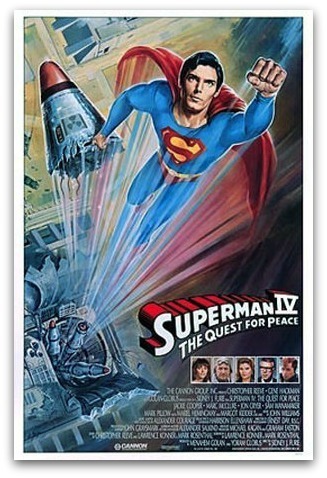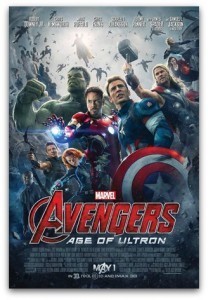Bathroom Readers' Institute's Blog, page 111
May 19, 2015
Impossible Questions: Dem (Fish) Bones Edition
Think you know the answer to this question? Think you can get it? Good luck…and come back tomorrow to see if you’re right.
How does a song by the quirky ‘80s band Fishbone figure into one of the most iconic scenes in movie history?
Want more impossible questions? Check out Uncle John’s Impossible Questions.
The post Impossible Questions: Dem (Fish) Bones Edition appeared first on Trivia Books and Facts | Uncle John's Bathroom Reader.
Ask Uncle John Anything: Air Today, Gone Tomorrow
Uncle John knows pretty much everything—and if he doesn’t, he heads his massive research library, or puts one of his many associates on the case. So go ahead: In the comments below, ask Uncle John anything. (And if we answer your question sometime, we’ll send you a free book!)
Why do balloons slowly deflate?
 That thin wall of rubber that keeps in the air and your kid delighted for upwards of 10 minutes is airtight, which is how it keeps air inside and the balloon properly inflated, obviously. But it’s not completely or perfectly airtight. As the surface stretches to inflate, the surface becomes so thin in some places that tiny, microscopic holes result.
That thin wall of rubber that keeps in the air and your kid delighted for upwards of 10 minutes is airtight, which is how it keeps air inside and the balloon properly inflated, obviously. But it’s not completely or perfectly airtight. As the surface stretches to inflate, the surface becomes so thin in some places that tiny, microscopic holes result.
Air molecules are able to slowly diffuse, or escape, via the surface of the balloon, or tiny holes in the know you tied to keep the darn thing closed.
This process of slow air leakage isn’t so slow with those shiny, fancy, helium-filled mylar balloons. That’s because it’s easier for helium to escape the balloon than it is for regular air to escape regular plastic balloons. Helium exists as a single atom, so it’s smaller and quicker, if you will. That air you breathed in bonds as two or three atoms (and of different elements, including carbon dioxide). Those cause a jam up in the escape pockets.
But if air can leak out…doesn’t that mean that air can also leak in, and re-inflate the balloon? It could, but it doesn’t. The air pressure is higher on the inside of the balloon (because of the surface of the balloon desperately holding all that air in one place).
The post Ask Uncle John Anything: Air Today, Gone Tomorrow appeared first on Trivia Books and Facts | Uncle John's Bathroom Reader.
May 8, 2015
The Strange World of J-Pop
If you’ve got teenagers, you’re probably familiar with the bright and shiny pop music of acts like Katy Perry and One Direction. Things are a lot more sugary in Japanese pop music, or “J-Pop.”
Puffy AmiYumi
 This Tokyo duo, singers Ami Onuki and Yumi Yoshimura, are one of the few Japanese music acts to enjoy some success in the U.S. They first earned attention in the late 1990s, when rapper Sean Combs – aka Puff Daddy – objected to their name, which back then was just Puffy. The duo added in their first names to avoid a lawsuit. In the years that followed, the duo earned their own Cartoon Network show called Hi Hi Puffy AmiYumi, spawned a few Nintendo games and served as goodwill ambassadors to the U.S. But what’s their music like? It’s all over the place. Many of their albums contain jazz songs and ‘60s-style rock in addition to more straightforward pop tunes.
This Tokyo duo, singers Ami Onuki and Yumi Yoshimura, are one of the few Japanese music acts to enjoy some success in the U.S. They first earned attention in the late 1990s, when rapper Sean Combs – aka Puff Daddy – objected to their name, which back then was just Puffy. The duo added in their first names to avoid a lawsuit. In the years that followed, the duo earned their own Cartoon Network show called Hi Hi Puffy AmiYumi, spawned a few Nintendo games and served as goodwill ambassadors to the U.S. But what’s their music like? It’s all over the place. Many of their albums contain jazz songs and ‘60s-style rock in addition to more straightforward pop tunes.
AKB48
This band isn’t a group, it’s an army. When this girl group debuted in 2005, there were 48 singers in the band. They’ve now get 148 members and their own theater in Tokyo where they perform regularly—because it’s easier for fans to come to them, then for them to tour. One of the most successful acts in Japanese history, AKB48 has sold 30 million records and $128 million worth of merchandise in 2013 alone. They also hold multiple Guinness Book of World Records titles including “Largest Pop Group” and “Most Number of TV Ads Aired in 24 Hours.” In 2012, when AKB48 had 90 members, each one started in 90 different commercials for Wonda Coffee that all aired on the same day.
Momoiro Clover Z
This girl group released their first album in 2008 but they’re better known for their crazy live shows. Momoiro Clover Z’s members perform gymnastics, ballet, and stunts on stage. Despite their intensely choreographed performances, they also sing live instead of relying on lip-synching, a rarity for pop stars in any country. Much like Puffy AmiYumi, their music also borrows from various different genres. Their albums feature everything from punk and pop music to heavy metal and indie rock, which has earned the group a very diverse following. In the past year, Momoiro Clover Z recorded a song with KISS and opened for Lady Gaga.
The post The Strange World of J-Pop appeared first on Trivia Books and Facts | Uncle John's Bathroom Reader.
7 Things Called Champagne that Aren’t Champagne
Many regions produce sparkling wine, but only the ones made in the French area of Champagne can legally be called Champagne. Here are some other sparkling wines…and their proper names.
 Saumur
SaumurWine is made all over France. Champagne, in the northeastern part of the country is known for its sparkling wines, and Saumur, a city in west-central’s France Loire Valley, is a major wine-producer, too. Saumur is the name given to sparkling wine from in and around the Loire, as is Saumur Mousseaux. (What does mousseaux mean in French? Sparkling.)
Cava
Up until 1986, sparkling wines produced in the Catalonia region of Spain were called “Spanish Champagne.” But when Spain joined the European Union that year, it was legally required to stop. While locally and colloquially, Spanish sparkling wine is still called champana or xampany, the variety is officially called cava, from the Spanish word for “cellar,” where wine is usually stored.
Prosecco
As Ciabatta bread was a response to the popularity of French brad, Prosecco is the Italian version of Champagne. Prosecco was first made with Prosecco grapes, and comes from where they were first naturally cultivated: in the Italian village of Prosecco.
Asti
This is another kind of sparkling Italian wine, produced in the towns of Asti and Alba. It’s a sweet dessert wine, made with the Moscato grape.
Bernini
This is South Africa’s contribution to the world of bubbly wines. It’s very similar to Asti, in that it’s made with Moscato grapes, but only ones grown in South Africa.
Sovetskoye Shampanskoye
That Russian name translates to “Soviet Champagne,” and that’s exactly what it is. During Communist rule, the Soviet government made its own sparkling wine out of Aligoté and Chardonnay grapes. It was so popular that it kept being produced after the Soviet Union split up. Today it’s made in Belarus, Moldova, and the Ukraine, but is still called “Soviet Champagne.”
Champale
This was a popular beverage in the U.S. in the 1970s…because it was extremely cheap. It has nothing to do with champagne—it’s a sweetened malt liquor, similar to a beer, but brewed with fermentation yeasts traditionally used in wine. Flavors like “Golden” and “Dry” aimed to mock the taste of sparkling wines.
The post 7 Things Called Champagne that Aren’t Champagne appeared first on Trivia Books and Facts | Uncle John's Bathroom Reader.
May 7, 2015
Sports Trivia: A Brief History of the Negro Leagues
This week in 1920, the Negro National League began play. Here’s some sports trivia from our archives that looks back on baseball’s other big leagues.
A season in the Negro Leagues consisted of about 60 to 80 games played against other league teams. Beyond that, players played in 100 or so other games—against black teams, white teams, semi-pro teams, traveling teams, minor-league teams, small town teams, college teams, and even Major League teams or ad hoc teams with pro or ex-pro players on the roster. Of the 436 games they played against Major League teams or teams with Major Leaguers between 1920 and 1950, Negro League squads won the majority, 268 to 168.
There were seven primary black baseball leagues. The Negro National League started in 1920, shuttered in 1931, returned in 1933, then closed up again in 1948. The Negro Southern League existed in between incarnations of the NNL. The Eastern Colored League lasted from 1923 to 1928. The American Negro League, made of some former ECL teams, formed in 1929 and lasted for only one season. The East-West League made it halfway through the 1932 season. The Negro American League was the last existing league, playing from 1937 to 1960.
Because the league had very little money, records and statistics from that era are wildly inaccurate. It’s been widely reported, for example, that Negro League star Josh Gibson hit more than 800 home runs over his career, more than anyone has ever hit in the Majors. But historians estimate that because of the shorter season, Gibson probably hit somewhere between 200 and 300. (He is, however, the only player—in any league—ever to have hit a ball entirely out of Yankee Stadium.)
Baseball historians have begun to piece together statistics from old newspaper box scores and first-person accounts. That’s led to the increased status of Joe Williams as possibly the best pitcher in Negro League history, ahead of his more famous counterpart Satchel Paige. Some of Williams’s stats: In 1914 he went 41–3 in all games (and 12–2 in league play…with 100 strikeouts). In 1917 he struck out 20 batters in a no-hitter. And in 1930, at age 45, he struck out 27 batters in a 12-inning game, allowing just one hit. Williams retired in 1932 and died in 1946, a year before Jackie Robinson would suit up for the Brooklyn Dodgers.
In 1971 the Baseball Hall of Fame’s directors voted to admit Negro Leaguers into the Hall of Fame, ignoring a proposal to have a separate wing for those players. A special committee was formed to induct the first round of players. Enshrined that year were Josh Gibson, Satchel Paige, James “Cool Papa” Bell, Oscar Charleston, Martin Dihigo, John Henry Lloyd, Buck Leonard, Monte Irvin, and Judy Johnson. (Only Irvin and Paige played in the Major Leagues.)
Hall of Famer Dave Winfield has been especially vocal about recognition for the Negro Leagues. In 2008 Major League Baseball accepted his idea of holding a special honorary draft, in which each of the 30 MLB teams would “select” one player from the Negro League era. The New York Yankees picked Emilio Navarro, who was still alive at 102 years old. Technically, that makes him the oldest pro baseball player in history.
For more sports trivia, check out Uncle John’s Sports Spectacular.
The post Sports Trivia: A Brief History of the Negro Leagues appeared first on Trivia Books and Facts | Uncle John's Bathroom Reader.
Cannon Films: The Craziest Studio in Hollywood History
Here’s a quick rundown of the rise and fall of the studio that produced trashy, video store classics like The Delta Force and Breakin 2: Electric Boogaloo.
 Dennis Friedland and Chris Dewey longed to be successful film producers…but didn’t want to work within the Hollywood system. So in 1967, they started their own company, Cannon Films, with a simple business plan: Produce every movie for $300,000 or less. Despite cranking out B-movies like Joe and The Sorcerers, Cannon was on the verge of collapse in 1979, and the company was sold for $500,000 to two Israeli businessmen, Menahem Golan and Yoram Globus. That’s when things at the company really started to get interesting.
Dennis Friedland and Chris Dewey longed to be successful film producers…but didn’t want to work within the Hollywood system. So in 1967, they started their own company, Cannon Films, with a simple business plan: Produce every movie for $300,000 or less. Despite cranking out B-movies like Joe and The Sorcerers, Cannon was on the verge of collapse in 1979, and the company was sold for $500,000 to two Israeli businessmen, Menahem Golan and Yoram Globus. That’s when things at the company really started to get interesting.
Golan and Globus (who are also cousins) bought up ridiculous scripts and put them into production as quickly and cheaply as possible, aiming to make profits with action and “youth oriented” movies. They made millions, because it was also a matter of right-place, right-time: The home video age had just begun, and Cannon was one of the most eager film studios to put its films into video rental shops around the world.
 The cousins bought the rights to produce inexpensive sequels to Death Wish, Charles Bronson’s popular 1974 revenge film, and started bankrolling Chuck Norris flicks like Missing in Action. Their scheme worked out pretty well and in 1986 their company hit its peak with a whopping 43 films produced in just one year. However, Cannon Films ran into serious financial trouble once more after the cousins nabbed the rights to produce Superman IV: The Quest For Peace. They slashed the initial budget by half but it was a decision that had a disastrous impact on the final product. The film, which received terrible reviews, was a flop that killed the Superman franchise. After suffering major losses, the cousins had to nix their plans for a Spider-Man movie, and a big-screen version of Masters of the Universe became a cheaper, easier to make Jean Claude Van Damme movie called Cyborg. Cannon shuttered for good in 1993; MGM bought its assets.
The cousins bought the rights to produce inexpensive sequels to Death Wish, Charles Bronson’s popular 1974 revenge film, and started bankrolling Chuck Norris flicks like Missing in Action. Their scheme worked out pretty well and in 1986 their company hit its peak with a whopping 43 films produced in just one year. However, Cannon Films ran into serious financial trouble once more after the cousins nabbed the rights to produce Superman IV: The Quest For Peace. They slashed the initial budget by half but it was a decision that had a disastrous impact on the final product. The film, which received terrible reviews, was a flop that killed the Superman franchise. After suffering major losses, the cousins had to nix their plans for a Spider-Man movie, and a big-screen version of Masters of the Universe became a cheaper, easier to make Jean Claude Van Damme movie called Cyborg. Cannon shuttered for good in 1993; MGM bought its assets.
Despite the studio crumbling, it definitely left a mark on the film industry. Many cheapo direct-to-video movies owe their very existence to Cannon Films and it helped give rise to independent studios like Miramax. It has also inspired two recent documentaries about its history, including Electric Boogaloo: The Wild, Untold Story of Cannon Films.
The post Cannon Films: The Craziest Studio in Hollywood History appeared first on Trivia Books and Facts | Uncle John's Bathroom Reader.
May 6, 2015
5 Great Athletes Who Became Great Businessmen
Uncle John’s new book, Lists That Make You Go Hmmm… is available now. Here’s a sample.
Tony Hawk (professional skateboarder, 1982–99)
 Hawk was an entrepreneur before he was a household name. In 1992 he took out a second mortgage to cofound the BirdHouse skateboard company. Seven years later, he solidified his reputation as one of the world’s greatest skateboarders at the 1999 X Games when he landed the thought-to-be-impossible “900” (two and a half rotations in midair). Capitalizing on his fame, Hawk moved into a new arena of business: video games.
Hawk was an entrepreneur before he was a household name. In 1992 he took out a second mortgage to cofound the BirdHouse skateboard company. Seven years later, he solidified his reputation as one of the world’s greatest skateboarders at the 1999 X Games when he landed the thought-to-be-impossible “900” (two and a half rotations in midair). Capitalizing on his fame, Hawk moved into a new arena of business: video games.
“I was shopping this game idea, weighing my options when I went to Activision, but when I saw what they were working on, I said, ‘This is exactly what I’d love to be involved with,’ and following that gut reaction was hugely successful.” How successful? The Tony Hawk video game series has made more than $1.6 billion, and his personal net worth is estimated at $120 million.
Dave Bing (NBA guard, 1966–78)
“The mistake most of us make is that we think we’re going to play forever,” said the former Detroit Piston, who in 1996 was named one of the NBA’s 50 greatest players. “Very few guys, I think, prepare for a second career.” Not wanting to make that same mistake himself, Bing spent his off-seasons working as a bank management trainee. When he retired in 1978, Paragon Steel wanted to hire him as a spokesman, but Bing insisted on a two-year training program instead. In 1980 he took out a loan and founded Big Steel, a steel-processing mill. At its peak, Big Steel was the 10th-largest African American–owned company in the U.S., with profits of $61 million. Bing also owned Superb Manufacturing, which made $28 million per year.
Gary Fencik (NFL safety, 1976–87)
After graduating from Yale University, Fencik signed with the Chicago Bears and spent his entire career there, setting the team’s all-time record for interceptions. In 1985, as the Bears’ season was heading toward the Super Bowl, Fencik was also working his way toward his MBA by spending two nights a week at finance school (possibly making him the only athlete ever to have earned a Super Bowl ring and an MBA in the same year). “One of the benefits of going to Yale is I had roommates, classmates, even teammates who were going to med school, law school, business school,” said Fencik, “so I never stopped thinking about what I was gonna do after football.” He retired in 1987, and in 1992 Wells Fargo hired him to run their Chicago investment office. By 2000 Fencik was heading up global business development for Adams Street Partners, a $25 billion private equity company, where today he’s also a full partner.
Ulysses “Junior” Bridgeman (NBA shooting guard, 1975–87)
One day, the former Milwaukee Buck heard a woman on a call-in radio talk show complain, “I was at Wendy’s, and I saw Junior Bridgeman working behind the counter. If that’s the best these ex-athletes can do…” What the lady didn’t realize was that Bridgeman was there learning his new trade from the ground up. During his time with the Bucks, he scored 11,517 points and held the franchise record for most games played consecutively. When he wasn’t on the court, he worked as an insurance salesman and at the front desk of a hotel. After retiring in 1987, he bought five Wendy’s hamburger franchises and learned every aspect of his business, including spending time behind the counter. Today, Bridgeman owns 195 Wendy’s restaurants, making him the second-largest franchise owner in the United States. He also owns 125 Chili’s restaurants and 45 Fannie May chocolate stores. Forbes lists him at #24 on their list of wealthiest black Americans and estimates his net worth at $200 million.
Roger Staubach (NFL quarterback, 1969–79)
“It takes a lot of unspectacular preparation to have spectacular results in both business and football,” says Staubach, who’s done both. He led the Dallas Cowboys to two Super Bowl wins and led the NFL in passing four times. But he still found time to moonlight as a real estate broker. In 1977 he opened his own firm called the Staubach Company and worked there full-time when he retired from football in 1979. By 2008 his company had 50 offices in the United States and was bought out by Jones Lang LaSalle real estate for $640 million. Staubach was named executive chairman and now takes home a reported
$12 million a year.
The post 5 Great Athletes Who Became Great Businessmen appeared first on Trivia Books and Facts | Uncle John's Bathroom Reader.
May 1, 2015
7 Weird May Holidays You Ought to Celebrate
It’s May again, which means it’s time for those classic celebrations of Cinco de Mayo, Memorial Day, and National Sea Monkey Day.
 May 3: Lumpy Rug Day
May 3: Lumpy Rug DayDo you have a lumpy rug? Today is the day you pay it some attention…by throwing it out, smoothing it out, or treating yourself to a less lumpy rug (or wall-to-wall carpeting).
May 4: Make-A-Book Day
Today, write a story, print it out, bound it between construction paper, and draw a picture on the cover. Congratulations, you made a book! (Around here, everyday is Make-A-Book-Day.)
May 9: Lost Sock Memorial Day
Take a moment on this day to remember all those socks that have been lost to the dryer, the underside of the couch, or the puppy.
May 11: Twilight Zone Day
Imagine if you will: a holiday that pays tribute to one of the spookiest and most critically beloved TV shows of all time…The Twilight Zone. (It’s also fairly Twilight Zone worthy that the show didn’t debut or air its last episode on a May 11, nor is that a significant date in the life of creator Rod Serling.) At any rate, go watch The Twilight Zoneˆ…if you have the time.
May 16: National Sea Monkey Day
There are lots of holidays to appreciate cats and dogs, and now there’s one to appreciate that packet of powdered brine shrimp you sent away for when you were nine years old that never quite became the lively family pictured in the comic book ad.
May 18: Visit Your Relatives Day
There’s Mother’s Day, Father’s Day, and this day to encourage us to visit any and all relatives. (Make sure to give them fair warning.)
May 23: Lucky Penny Day
If you see a penny, pick it up, and all day long, well, you know.
The post 7 Weird May Holidays You Ought to Celebrate appeared first on Trivia Books and Facts | Uncle John's Bathroom Reader.
Fake-or-Fact Friday: Something’s Rotten in the State of Norway
Two of the following weird news stories about the Scandinavian nation are true, and one is false. Can you guess which one we made up? The answer is at the end of the post.
A.
Norway is getting rid of radio. Within just two years time, there will be no more FM broadcasts in the country, as Norway will become the first country on earth to switch completely to digital broadcasting. Oddly enough, digital communications have become so prominent in recent years that they’ve driven down the price. It now costs eight times as much to broadcast on good ol’ FM as it does to beam it from a satellite in space. Unfortunately, only 20 percent of cars in Norway—where most people listen to the radio—are satellite-radio equipped.
B.
It’s raining worms! Really. While skiing in the mountains outside the large Norwegian city of Bergen, a woman found thousands of worms on top of giant snow piles. Analysis showed that the worm piles were 18 inches deep—and since there’s so many of them, and they were on top of mountains of snow, there’s no way they all just dug upwards through the dirt. It’s not the first time this has happened, with news reports in Norway marking the phenomenon back in the 1920s.
C.
Norway has periodically had a tenuous relationship with Scandinavian neighbor Denmark. While there hasn’t been an armed conflict between the two nations in centuries, tempers flared up in theatrical circles this month when the Oslo National Theater decided to mount a lavish production of William Shakespeare’s Hamlet. The play takes place in the court of a Danish king…but ONT workers completely rewrote the play to take place entirely in Norway. “This is an affront to both Shakespeare and Denmark,” said a letter to the editor in The Copenhagen Post.
Loading…
Want more of the patently untrue? Check out Uncle John’s Fake Facts. (Really!)
The post Fake-or-Fact Friday: Something’s Rotten in the State of Norway appeared first on Trivia Books and Facts | Uncle John's Bathroom Reader.
April 30, 2015
6 Avengers Facts—Trivia buffs, assemble!
 The Avengers: Age of Ultron is one of the most anticipated movies of the year. Get ready for the blockbuster with these facts about the comic book heroes. Trivia buffs, assemble!
The Avengers: Age of Ultron is one of the most anticipated movies of the year. Get ready for the blockbuster with these facts about the comic book heroes. Trivia buffs, assemble!
In 1963, the first issue of Marvel Comics’ Daredevil was delayed going to the printer, forcing the company to scramble to release something. Top artist and creator Stan Lee suggested an easy way to put a comic together was teaming up a bunch of existing characters together, imitating rival DC Comics’ Justice League.
For the sake of time and not confusing non-comics fans, the Avengers movies feature only a handful of members of the superhero team. Since introduced in 1963, the Avengers have had a rotating lineup of dozens of characters. The initial members were Iron Man, Thor, and Hulk (as depicted in the films), with the addition of Ant-Man and Wasp. Later additions included such obscure characters as Moondragon, Hellcat, Falcon, Quasar, Stingray…and Forgotten One.
In the U.K., The Avengers is a popular spy TV show from the 1960s (it had a cult following in the U.S.) that’s more well known than the comic book. When Marvel’s The Avengers was released in Great Britain in 2012 it was done so under the name Avengers Assemble.
Amanda Peet nearly got the role of Agent Hill (it went to Cobie Smulders) and Emily Blunt turned down the role of Black Widow, which went to Scarlett Johansson.
Mark Ruffalo did motion capture work for his CGI-oriented role as the Hulk…whose body was modeled after a stripper named Steve Romm.
Gwyneth Paltrow plays Tony Stark/Iron Man’s assistant, Pepper Potts, and she almost always appears barefoot. Reason: Producers wanted Robert Downey Jr. (Iron Man) to appear taller than her, an effect achieved by making Paltrow barefoot and putting Downey in platform shoes.
The post 6 Avengers Facts—Trivia buffs, assemble! appeared first on Trivia Books and Facts | Uncle John's Bathroom Reader.





